How advanced materials and technology in additive manufacturing, maintenance strategies, and engineering design can solve long-standing challenges in extreme conditions.
By Fadila Khelfaoui, Corporate Engineer – Velan; Luc Vernhes, Mechanical Engineer – Velan
In the world of severe service valves, reliability under extreme conditions is non-negotiable. For applications such as ebullated bed hydrocracking, where oil exits the reactor at temperatures approaching 850°F and pressures above 3,000 psi, the sudden thermal shocks imposed on valves can lead to cracking, leakage, and costly downtime.
Velan recently introduced a solution to this challenge: an additive manufactured (AM) thermal sleeve, branded Hexa-Shield™, designed to protect valves from the most punishing themal cycling conditions.
By harnessing advanced lattice geometries inside a double-walled Inconel sleeve, this technology has redefined how valves can be protected from rapid temperature fluctuations, improving durability while simplifying manufacturing com- pared to traditional thermal barrier coatings (TBCs).
It clearly exemplifies how advances in materials engineering, maintenance strategies, and manufacturing technologies are converging to solve long-standing challenges in the oil and gas sector.

Severe Service Valve Challenges and Advanced Thermal Protection
Ebullated bed hydrocracking is a refining process used to upgrade heavy oils into lighter, more valuable products. In this process, reactors operate at elevated temperatures up to 850°F and pressures as high as 3,500 psi with bubbling providing continuous mixing of reactants and catalysts.
Fresh catalyst is injected through designated valves (refer to location #5 in Figure 1), while spent catalyst is withdrawn through others (location #6 in Figure 1). These valves cycle daily to sustain uninterrupted operation.
This routine exposes valves to extreme thermal cycling, which is one of the most severe environments for valve operation. Differential temperatures within the catalyst flow can induce thermal stress, deformation, and premature fatigue cracking in the valve body.
End users have reported instances of thermal fatigue cracking, as confirmed through cross-sectional inspections, highlighting the challenges of maintaining reliable valves in this service.
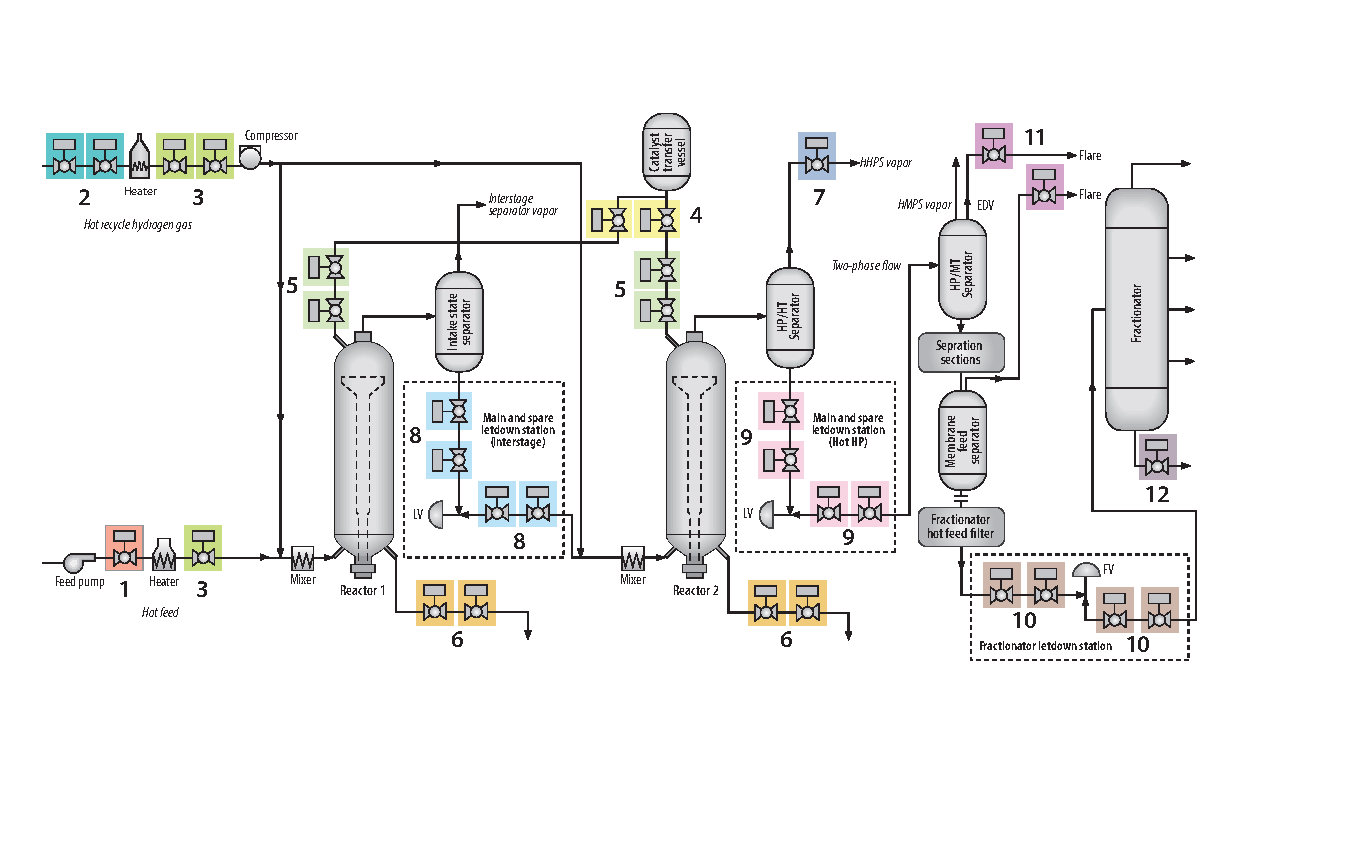
Current Thermal Protection Solutions
Thermal shock in severe service valves has traditionally been mitigated using several methods, each with limitations. One common method is pre-heating valves with electric heat tracing, which maintains the valve at an elevated temperature to reduce thermal gradients. However, this approach is unreliable if the heat tracing system fails or is interrupted, leaving valves vulnerable to rapid temperature fluctuations.
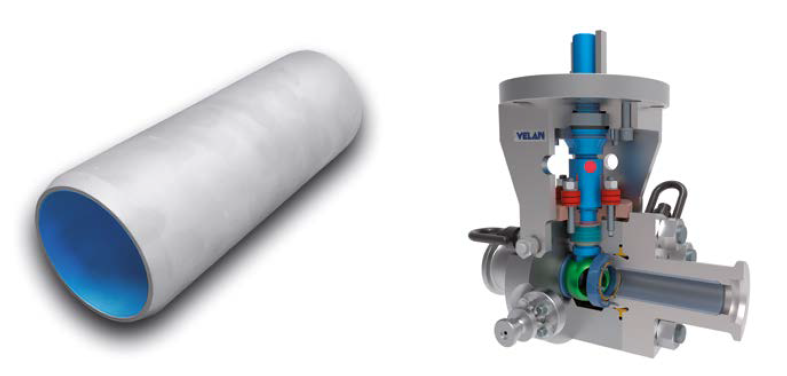
Another strategy involves using solid sleeves — simple cylinders — that provide some insulation but are limited in effectiveness against severe thermal cycling. Thermal barrier coatings have also been employed to improve insulation. Typically, ceramic coatings are applied to the outer surface of sleeves to reduce heat transfer.
While TBCs can be effective in some applications, they are prone to cracking and delamination under repeated thermal cycling, and their manufacturing and maintenance requirements can be challenging. Fully ceramic sleeves or refractory bricks, used in other high-temperature systems, are either too fragile or too bulky to be practical for ebullated bed valves.
Hexa-Shield™: AM Sleeve Solution
Acknowledging the limitations of conventional insulation methods, Velan pursued an approach that could offer enhanced thermal protection without compromising valve operation, maintenance, or ease of installation. This drive for innovation resulted in the creation of the Hexa-Shield™, a patented additively manufactured sleeve that’s designed to reliably shield valves under severe thermal cycling conditions, as illustrated in Figure 2. The figure shows the sleeve both as a standalone component and installed within the ball valve waterway, highlighting how it protects the valve from thermal stress.
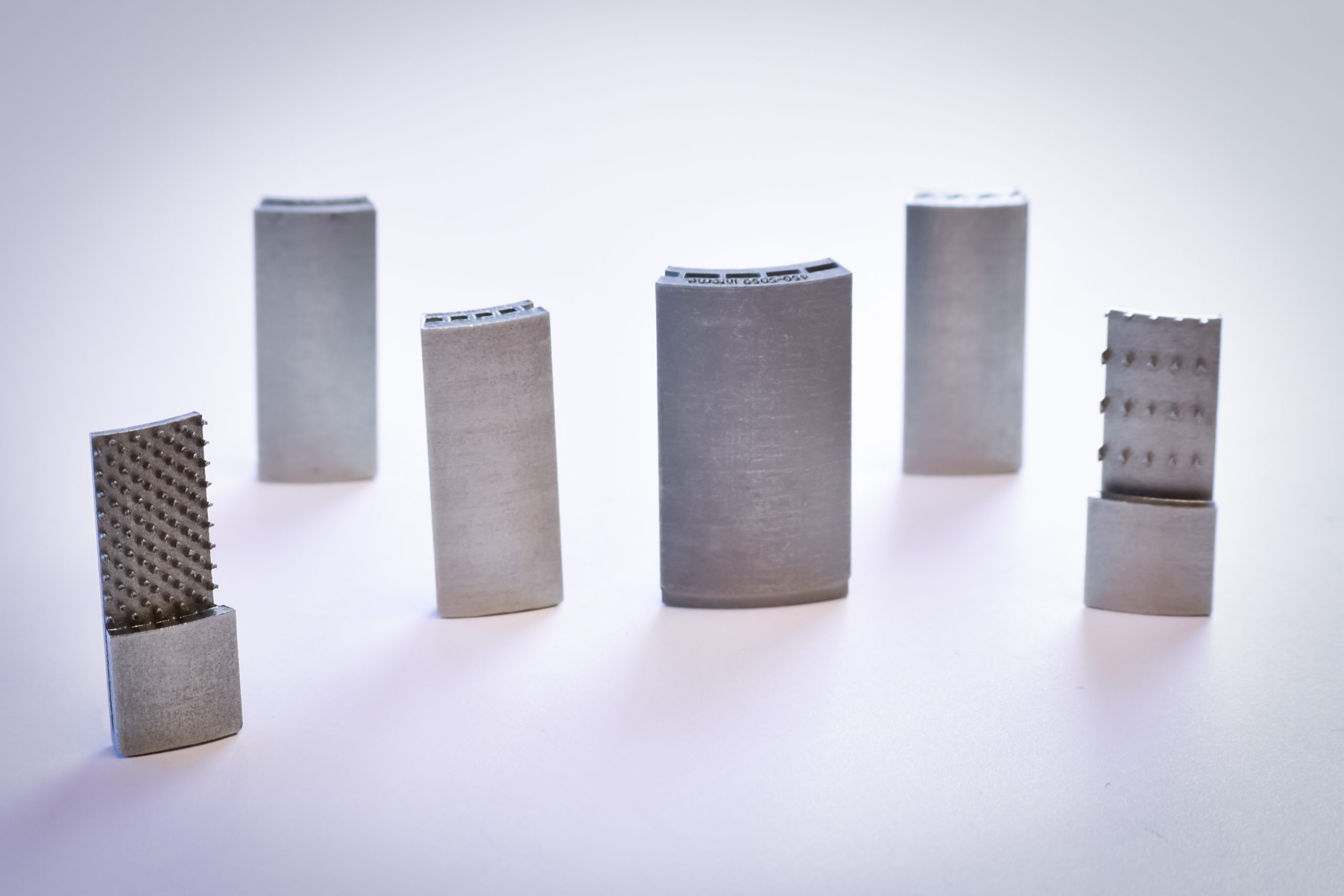
The Hexa-Shield™ sleeve features a double-walled structure with engineered internal lattice geometries, providing intrinsic insulation that slows heat transfer from the hot process media to the valve body. Multiple lattice patterns are employed within the sleeve to balance thermal insulation, mechanical integrity, and manufacturability (as shown in Figure 3). These internal lattices function as a thermal buffer, reducing temperature gradients across the valve and minimizing thermal stresses, and fatigue cracking.
By integrating materials innovation, additive manufacturing, and practical maintenance considerations, the sleeve extends valve longevity, reduces the need for frequent inspections, and improves process reliability.
This ensures that critical valves continue to operate safely and efficiently under the most demanding hydrocracking conditions, representing a step-change in valve protection for the oil and gas industry.
Thermal Shock Testing and Prototype Evaluation
A custom automated thermal shock test rig replicating the severe thermal cycling experienced by valves in locations 5 and 6 (see Figure 1) was developed to evaluate ™Hexa-Shield’s performance. High-temperature and high-pressure steam were injected into the valve, followed by rapid cooling cycles. Multiple thermocouples captured temperatures at critical points on the valve body ID and OD, enabling detailed thermal profiling (see figures 4 and 5).
Testing demonstrated that the valve body ID without a sleeve was prone to rapid temperature variation, leading to sharp increases in stress. In contrast, the Hexa-Shield™ sleeve reduced the ID temperature by approximately half and limited thermal stress to less than one-third of the un-sleeved case.
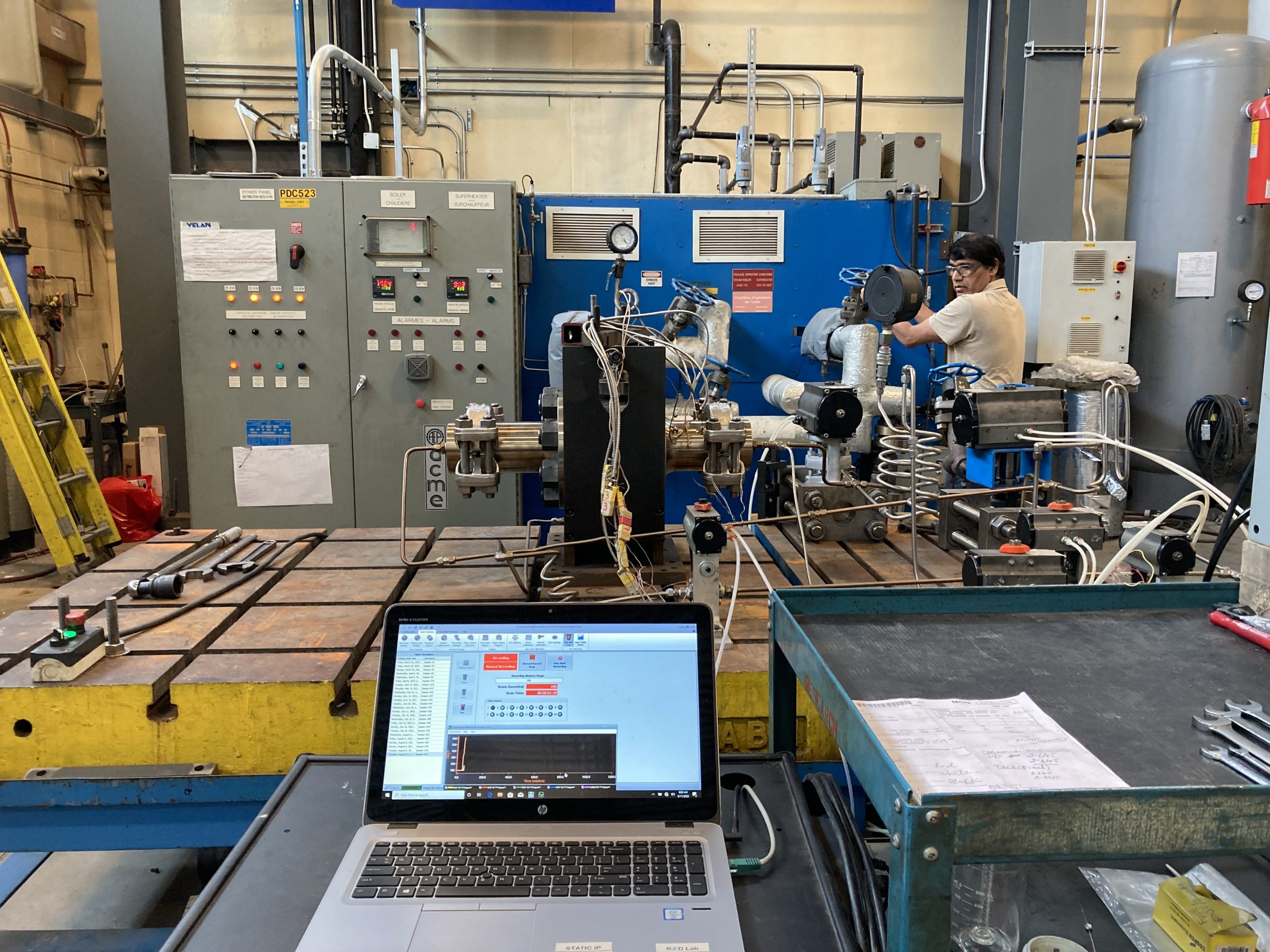
Both physical testing and finite element analysis (FEA) confirmed its effective- ness in lowering thermal gradients and stresses, thereby mitigating cycling-induced damage.
Hexa-Shield™: Commercially Scalable
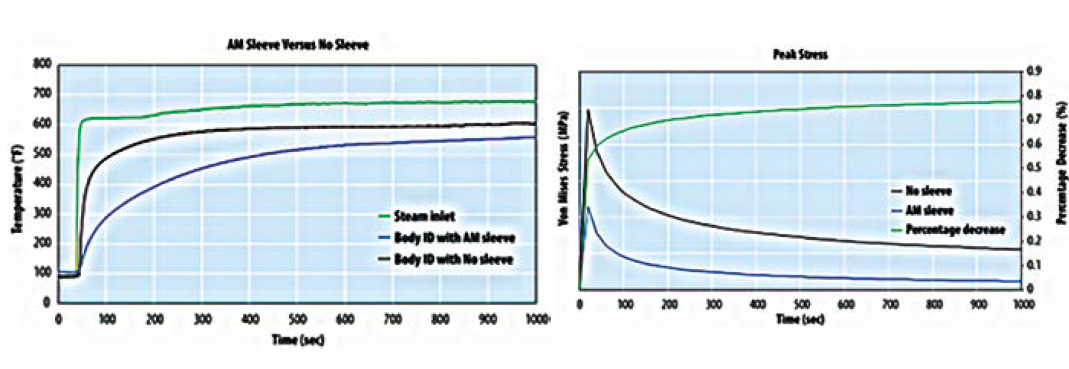
Following successful validation, hundreds of Hexa-Shield™ AM sleeves have been produced and delivered commercially, demonstrating the technology’s scalability, reliability, and reproducibility.
Additive Manufactured provides rapid production, design adaptability for different valve sizes, and seamless integration into maintenance programs.
Operators benefit from extended valve life, reduced inspection frequency, and enhanced process reliability, establishing a benchmark for industrialized thermal protection in severe service valves.
Redefining Valve Protection
For Velan, Hexa-Shield™ represents more than a novel application of additive manufacturing; it is a practical, high-performance solution to a long-standing challenge in severe service valve design.
By tackling thermal shock through a robust, application-driven approach, this technology has not only advanced valve protection but expanded the possibilities for engineering and manufacturing critical valve components. As refineries push the boundaries of temperature and pressure, solutions like Hexa-Shield™ will be pivotal in maintaining reliable, durable, and high-performing valves in the world’s most demanding processes.



